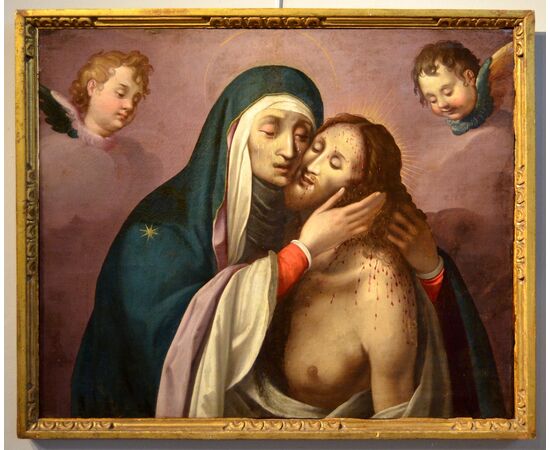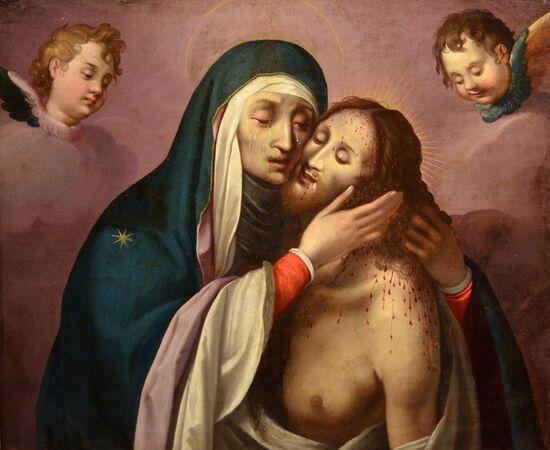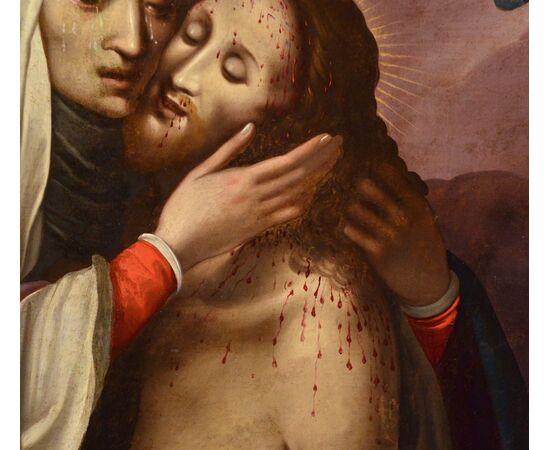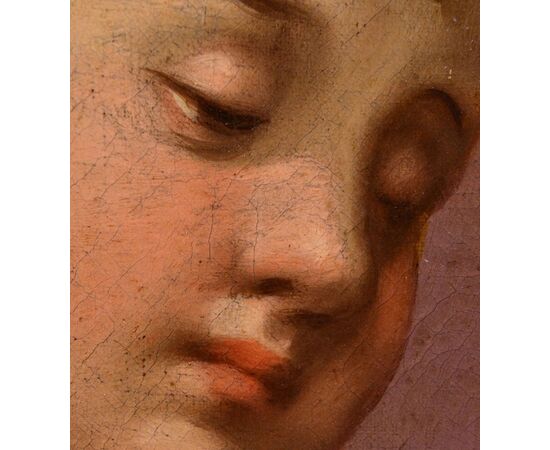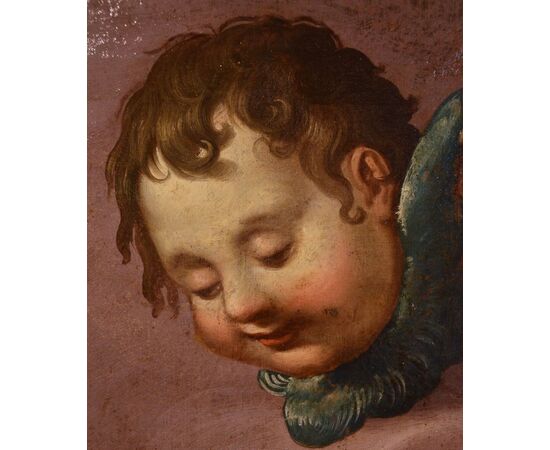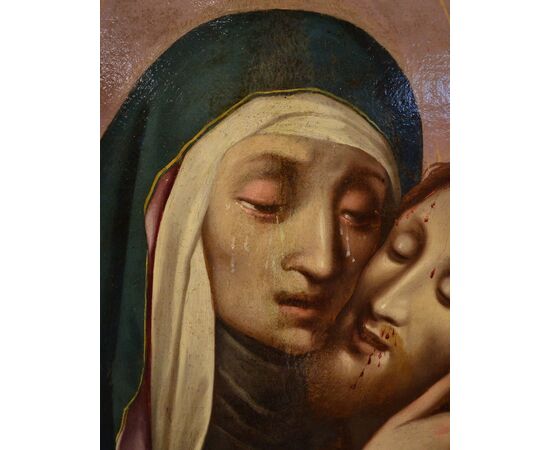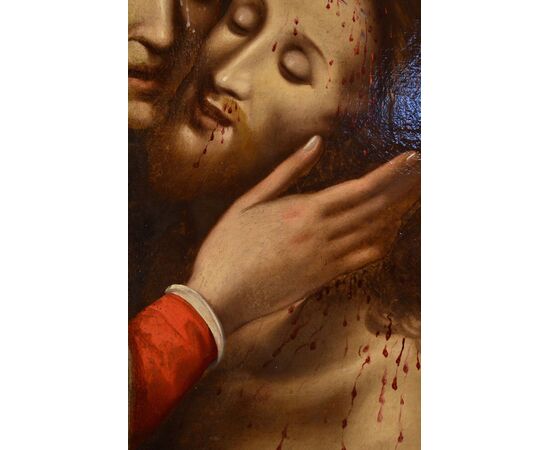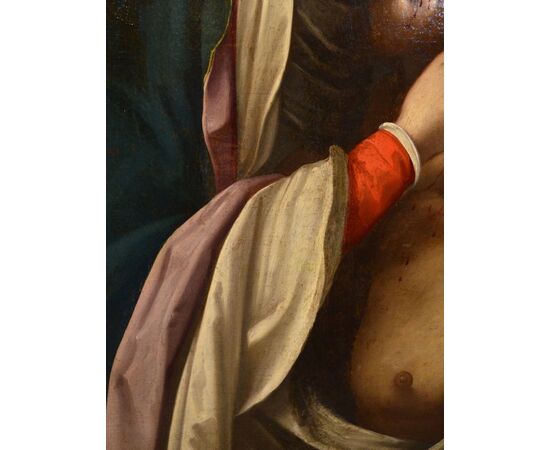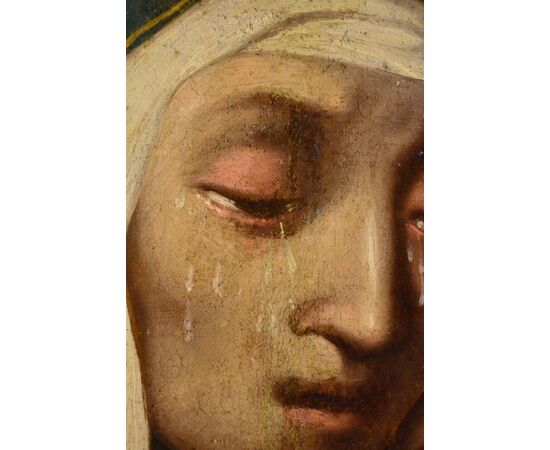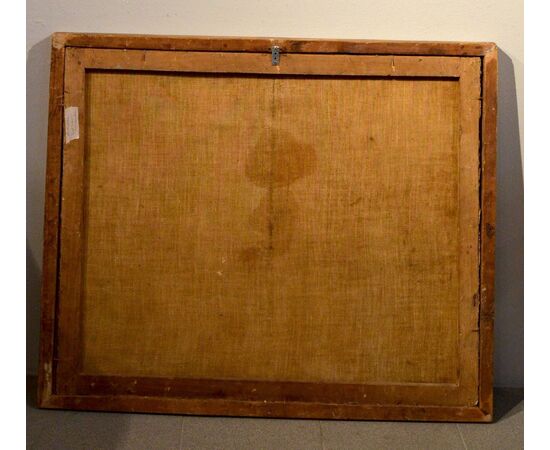Pietà with two cherubs, 16th century Roman Mannerism
Painter active in Rome in the 16th century, circle of Scipione Pulzone (Gaeta 1550 – Rome 1598)
The Pietà (Dead Christ supported by the Madonna)
oil on canvas, cm. 78 x 94
framed cm. 86 x 102
All the details of the work can be consulted directly on: https://www.antichitacastelbarco.it/it/prodotto/la-pieta-con-due-cherubini-roma-500
Observing the fine quality as well as the elegance of the design of this intense Pietà of the 16th century, we can associate its execution with the most refined works of late Roman Mannerism. In particular, there are many points of contact with the mature style of Scipione Pulzone, known as il Gaetano (Gaeta 1550 – Rome 1598), whose thriving workshop took up this subject in numerous variations.
The artist is considered one of the most original exponents of painting in the age of the Counter-Reformation and one of the most esteemed artists active in the Roman territory in the second half of the sixteenth century.
In the canvas proposed here, our author has been able to render the moment of the lamentation of Christ in an extraordinary way, demonstrating precision, realism and emotional depth in the interpretation of the sacred union between the Madonna and Christ, through a masterful play of contrasts of colors and lights and shadows.
The pietistic and devotional cut of Counter-Reformation painting is evident in the canvas: the representation, of great dramatic effect, shows Christ, after being deposed from the cross, welcomed in the arms of the Virgin.
There is a strong physical and psychological characterization of the characters rendered by the marked chiaroscuro effects and the thick contour lines as a function of a plastic and sculptural construction of the shapes; the intense maternal compassion is revealed by the expression on her face which, aware of the fate of her son, exudes suffering, but also calm resignation. Christ, abandoned in his mother's embrace, shows a painful but at the same time serene face, made even more exciting by the smile that seems to hint at the Virgin.
The painter has favored cold tones, with a purplish background, creating an intense and surreal effect, not without Iberian and Flemish influences. The detail of the chroma with which our author wanted to define the background is also incredibly full of charm and spiritual meaning: purple is linked to repentance, atonement and sacrifice.
The painting, like all our objects, is sold accompanied by a photographic certificate of authenticity in accordance with the law (FIMA)
For more details please contact us: we are at your complete disposal for any information.

